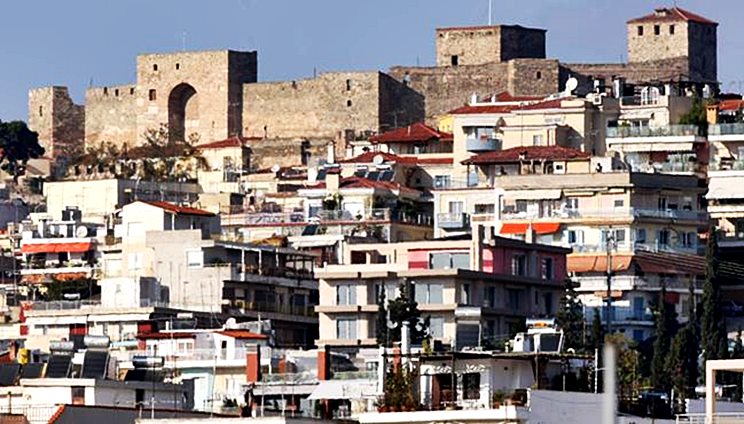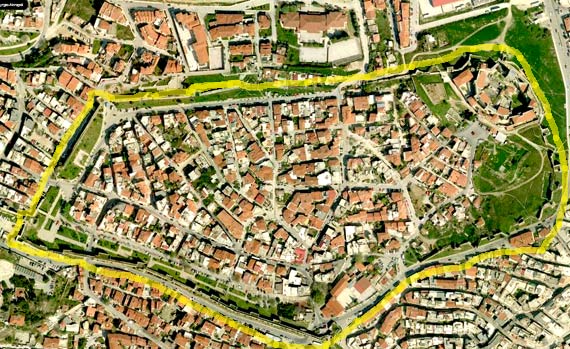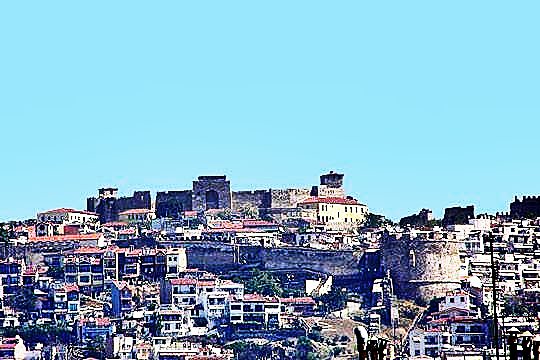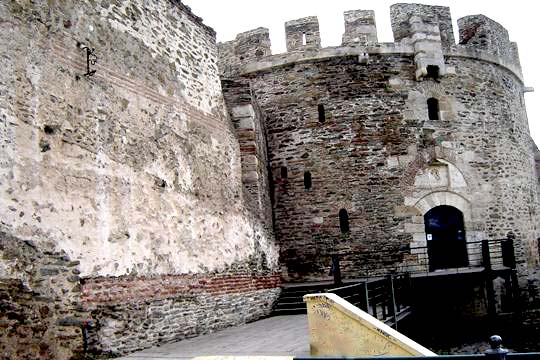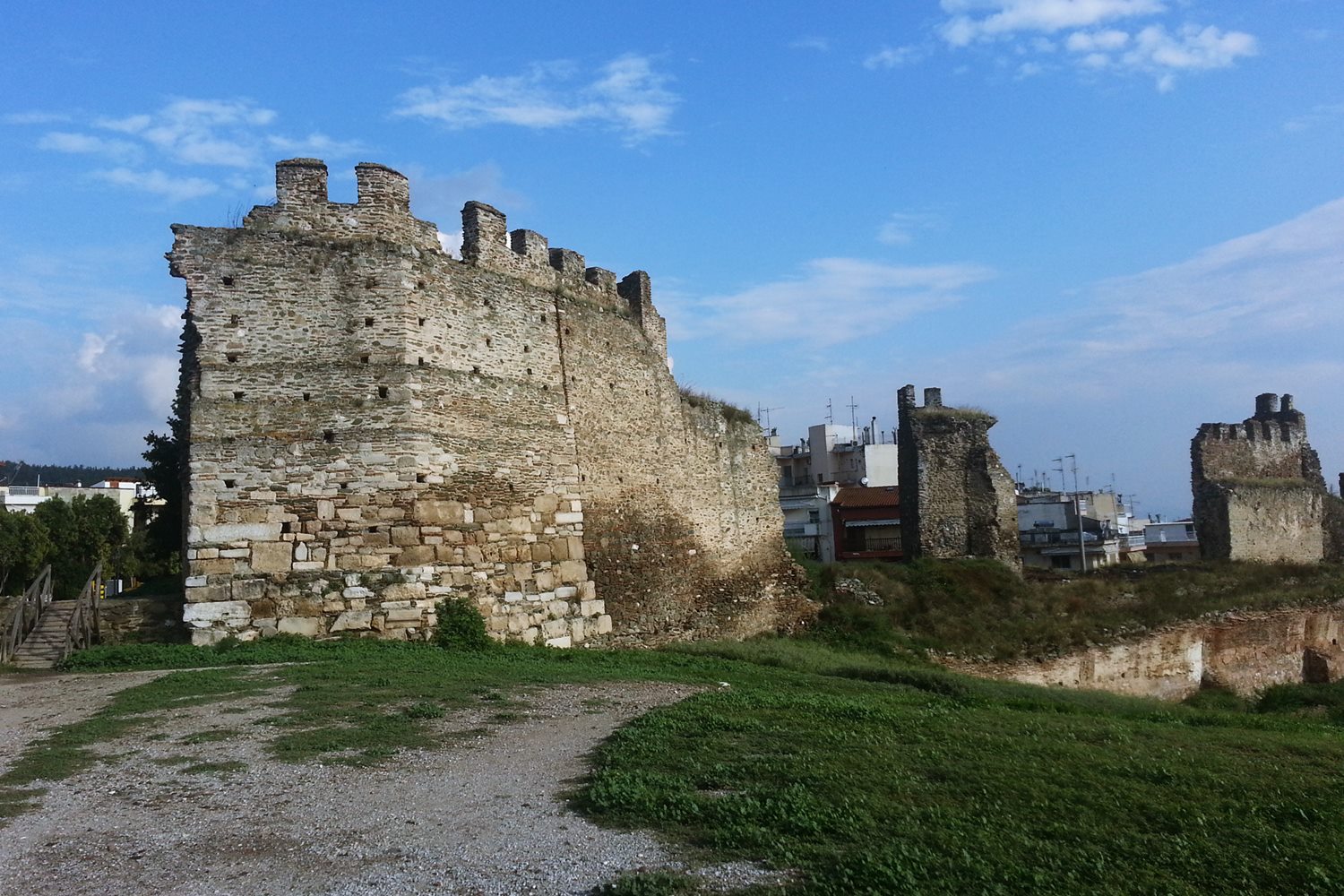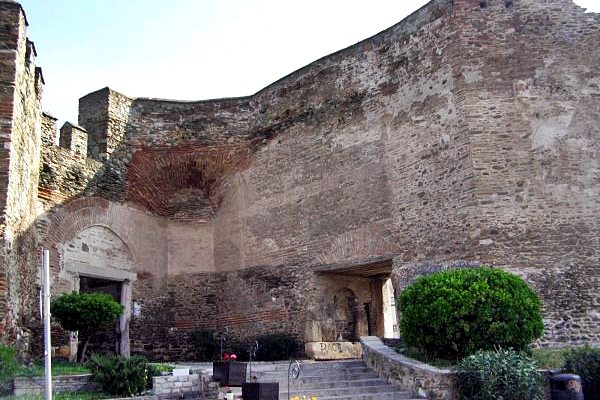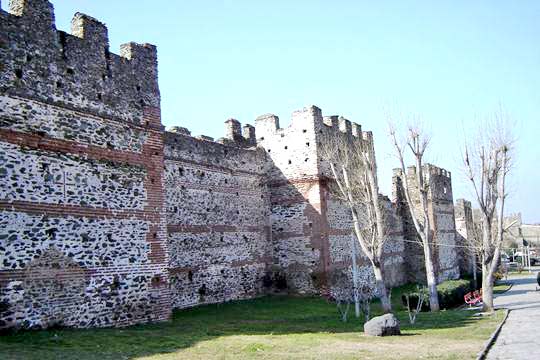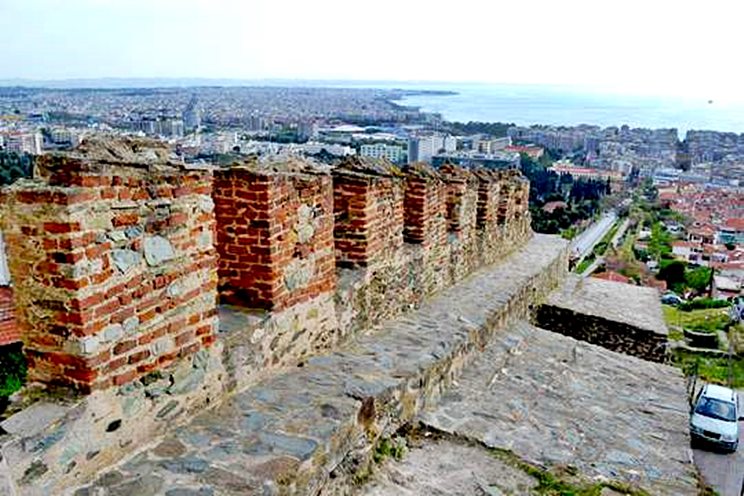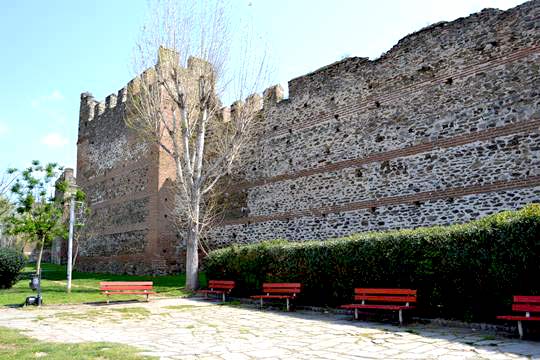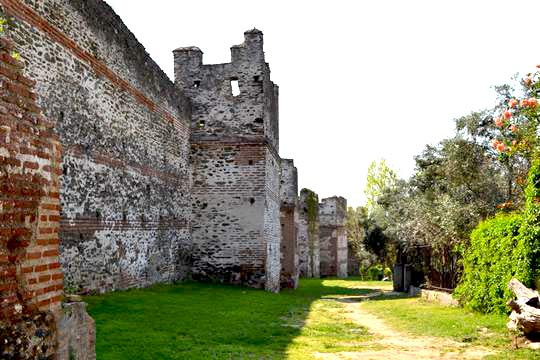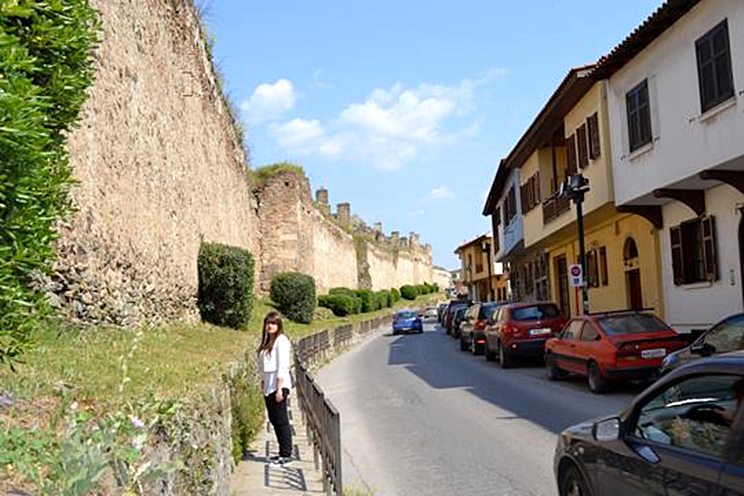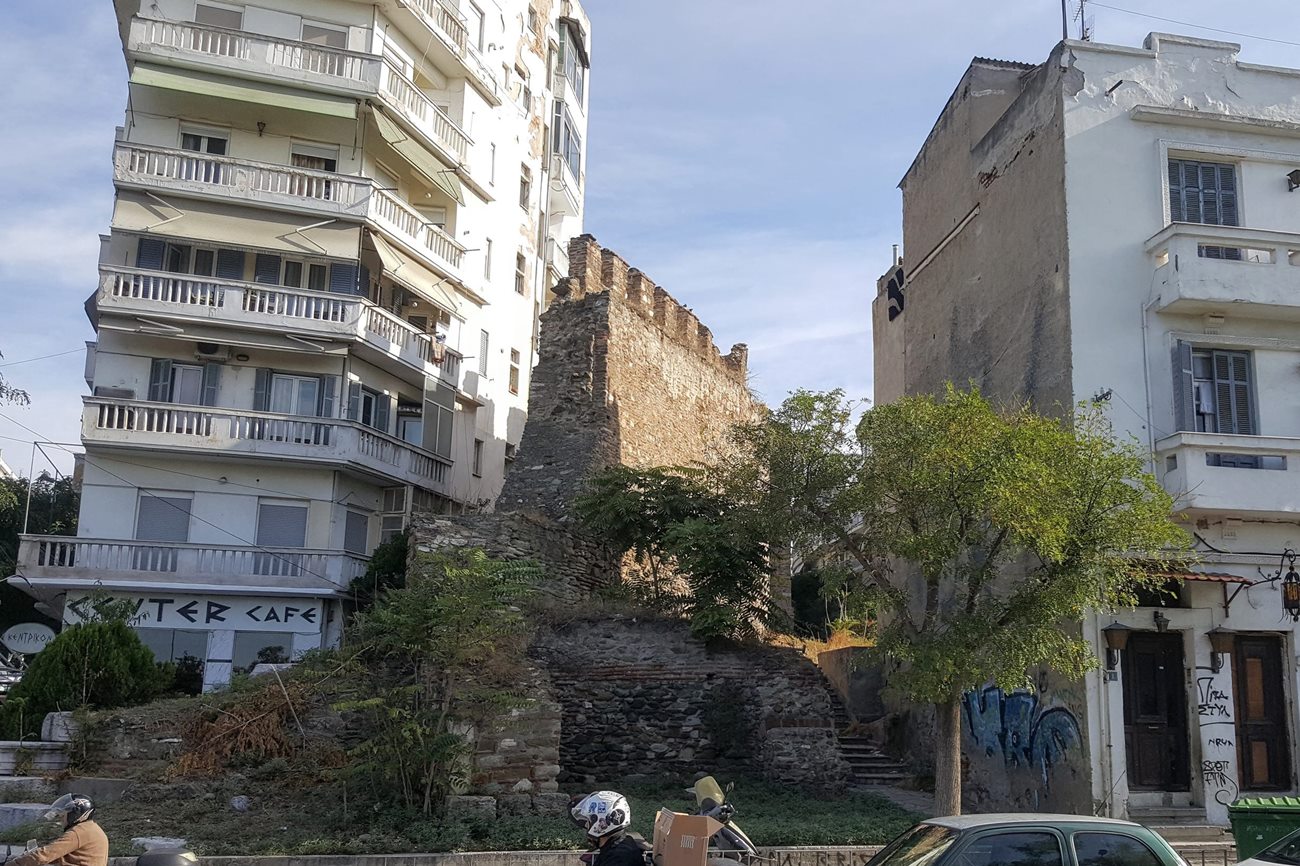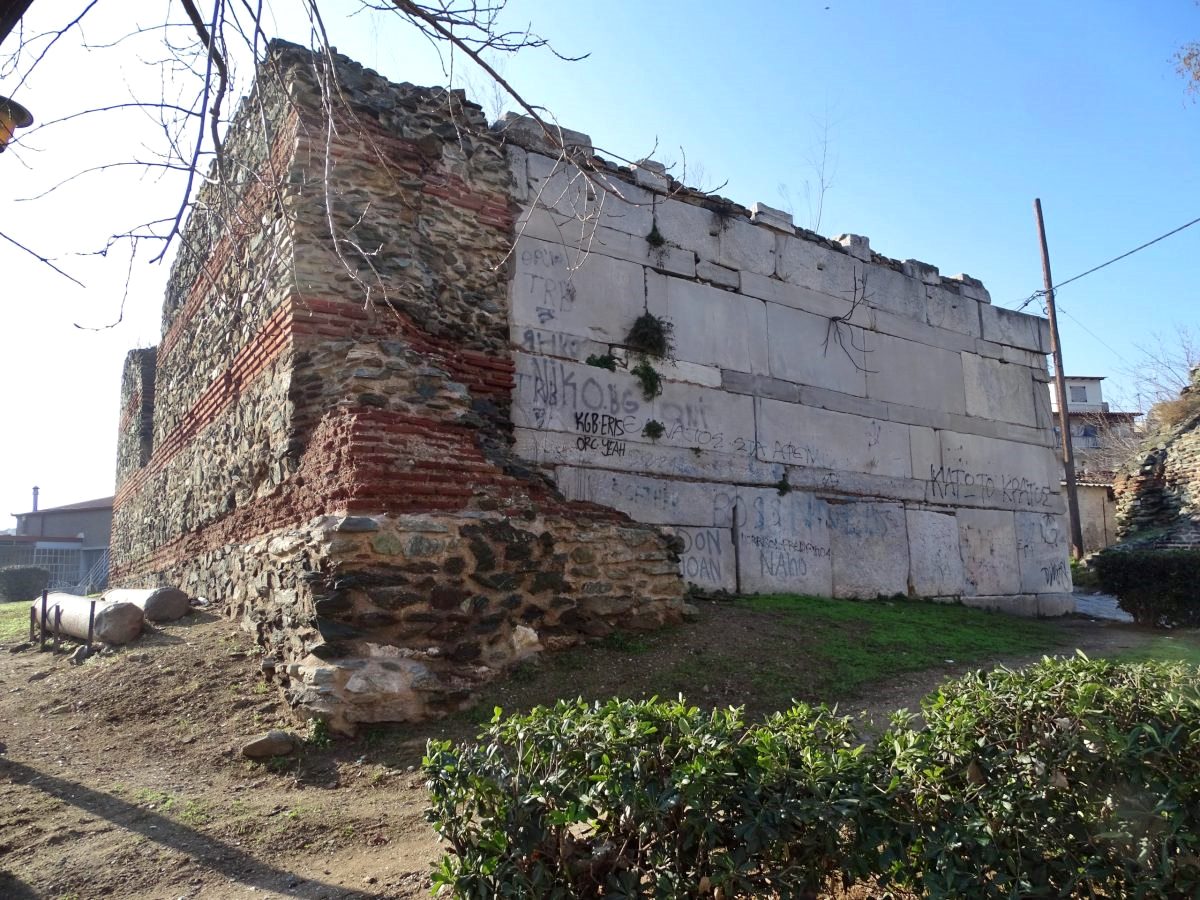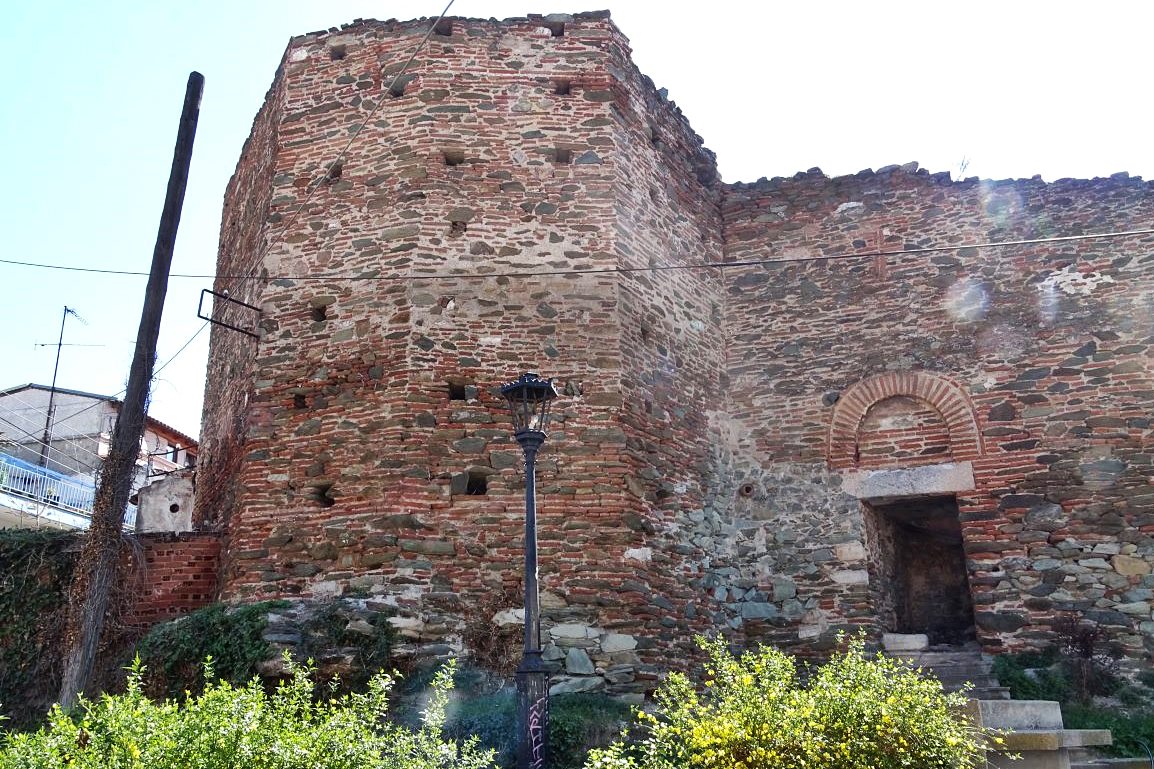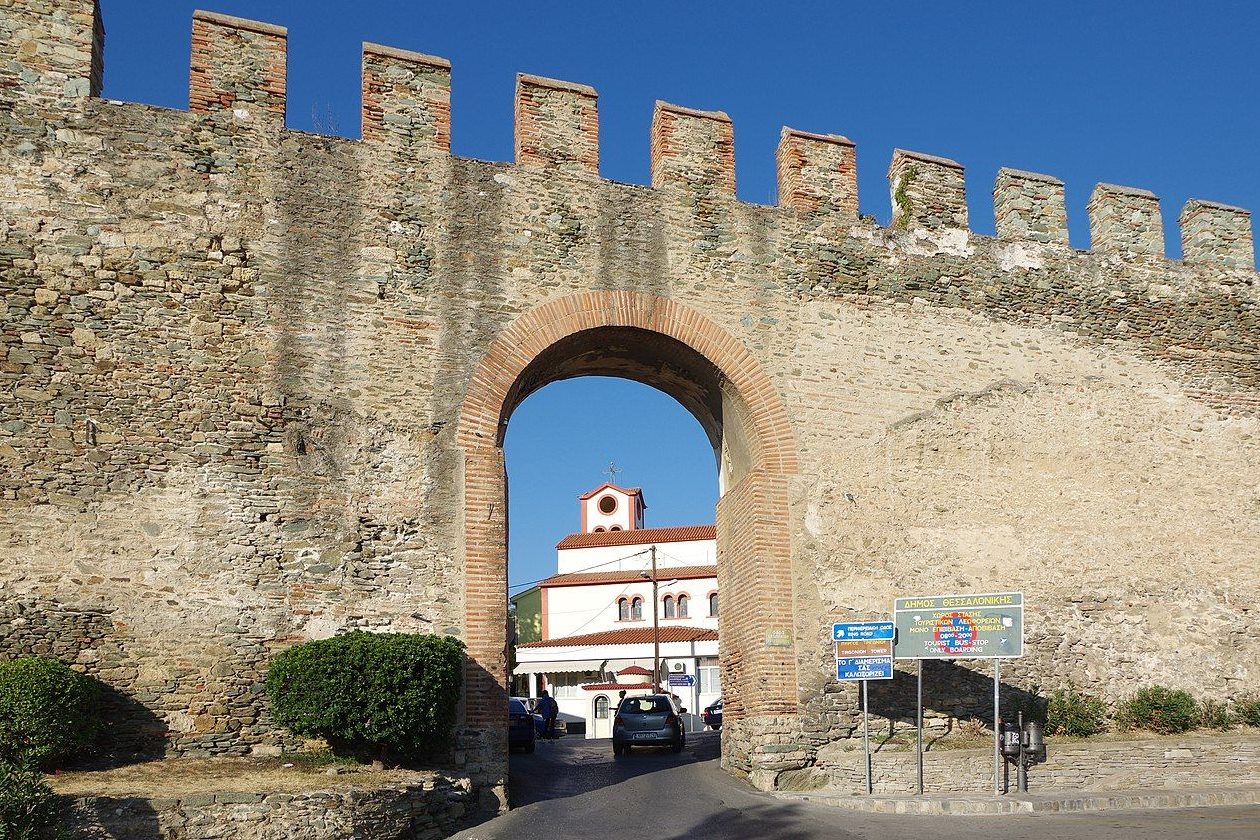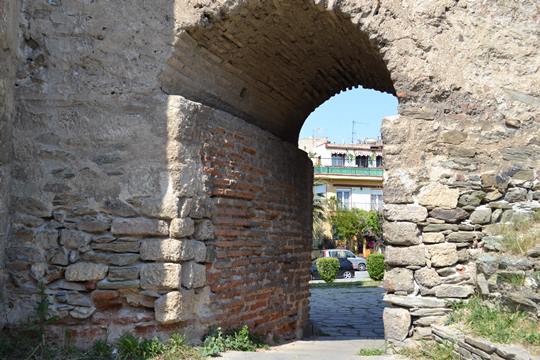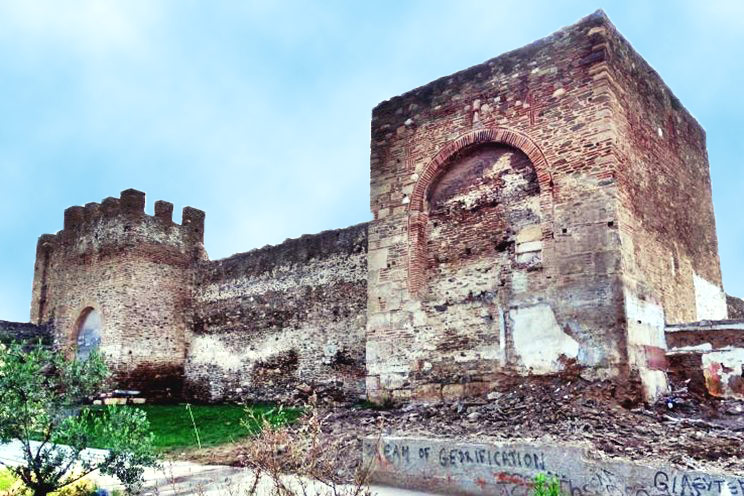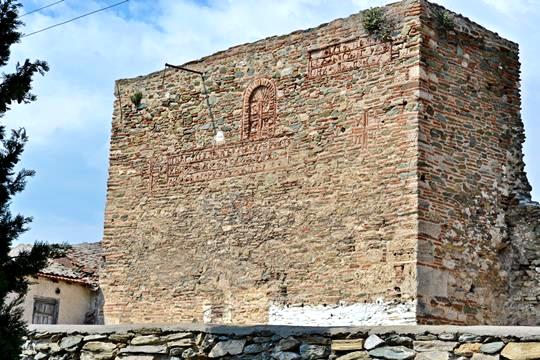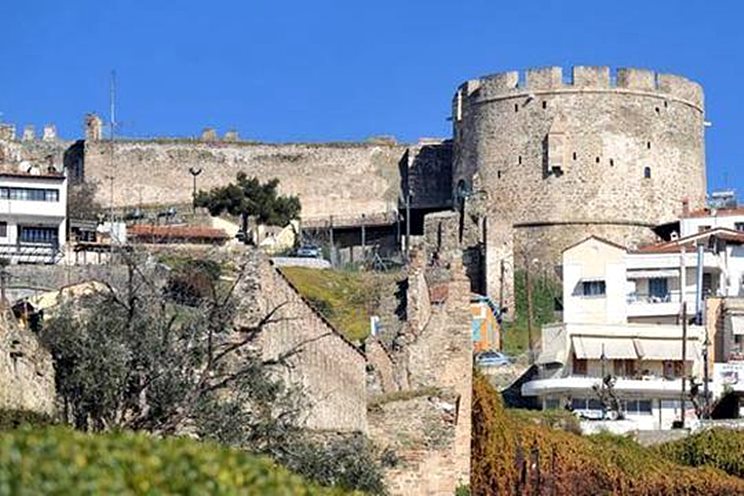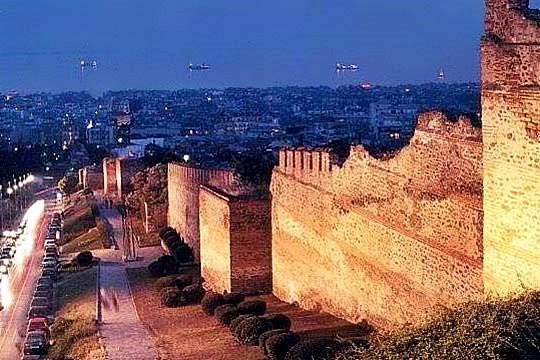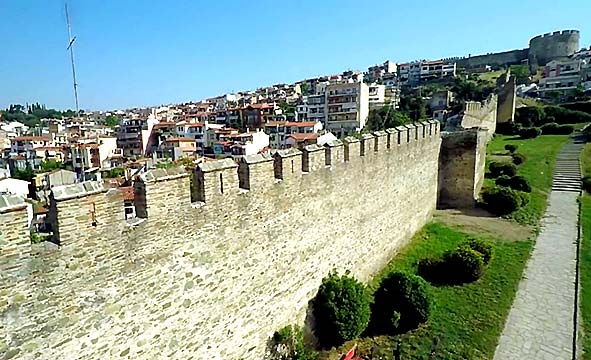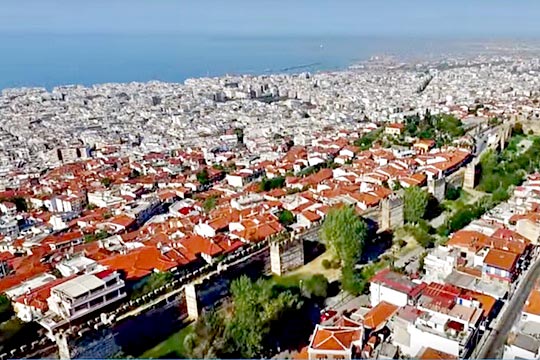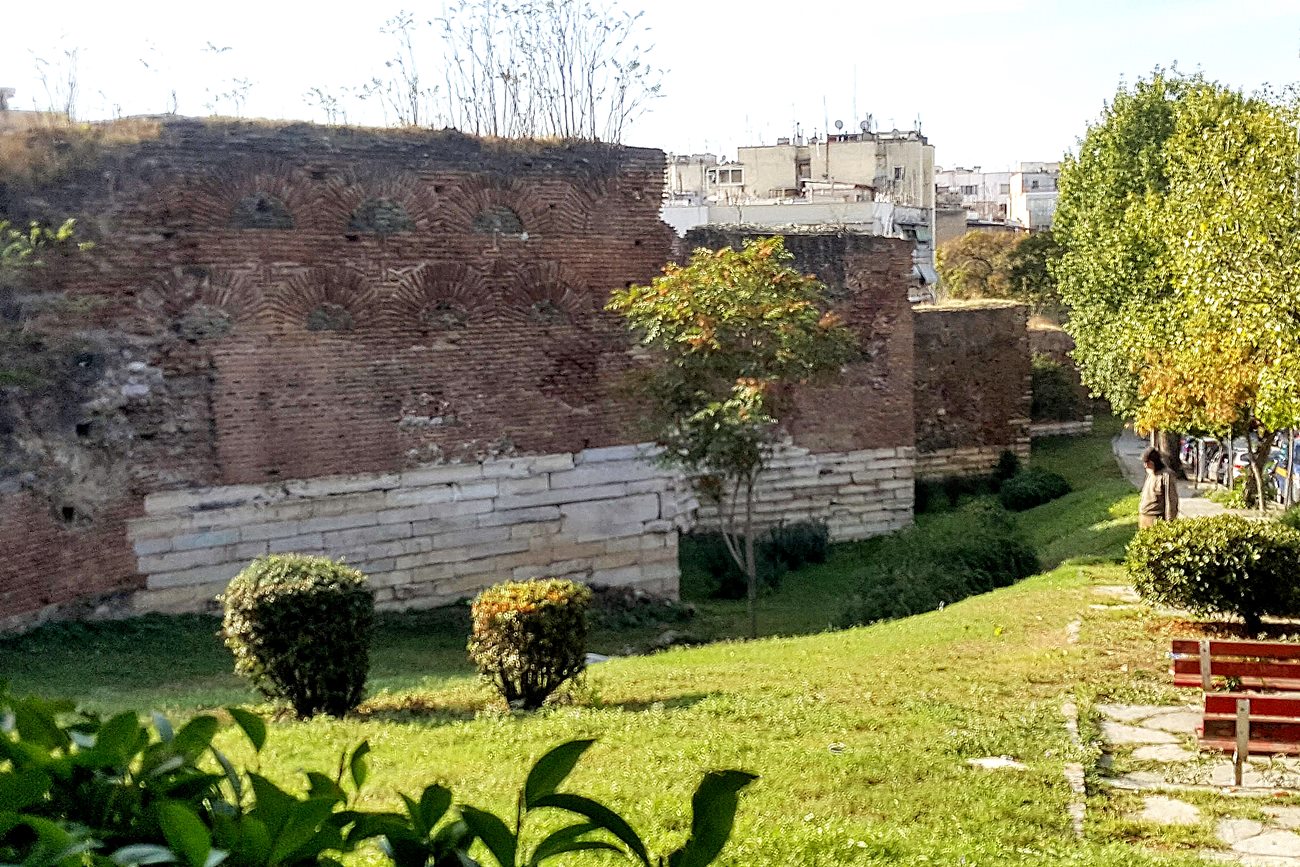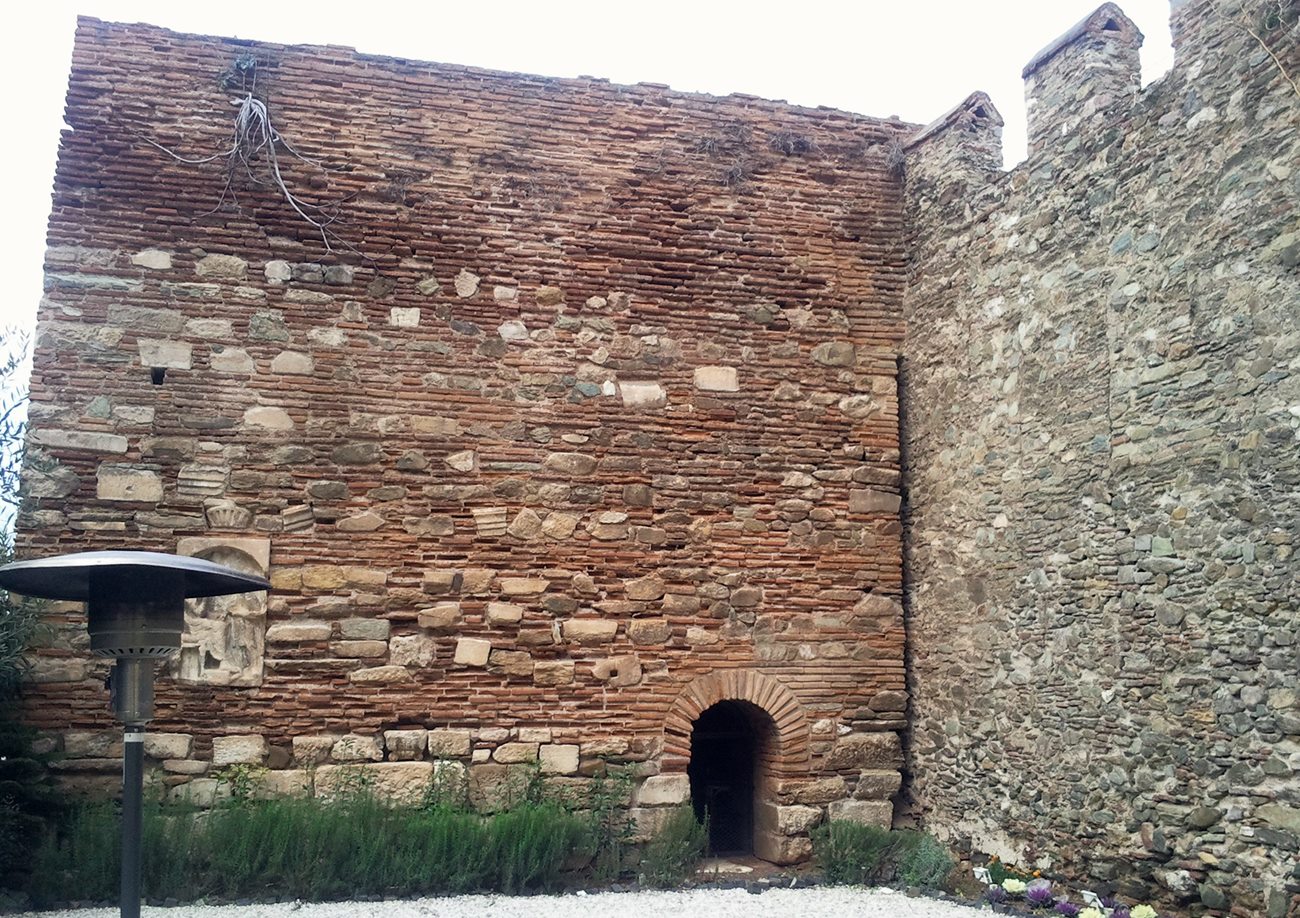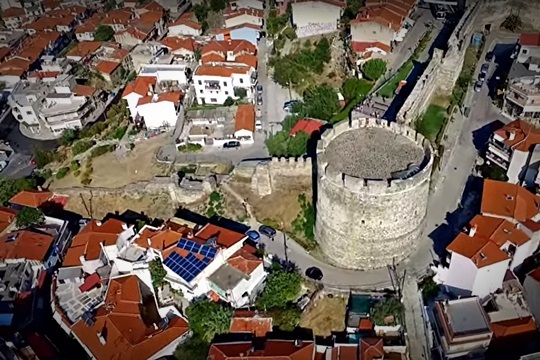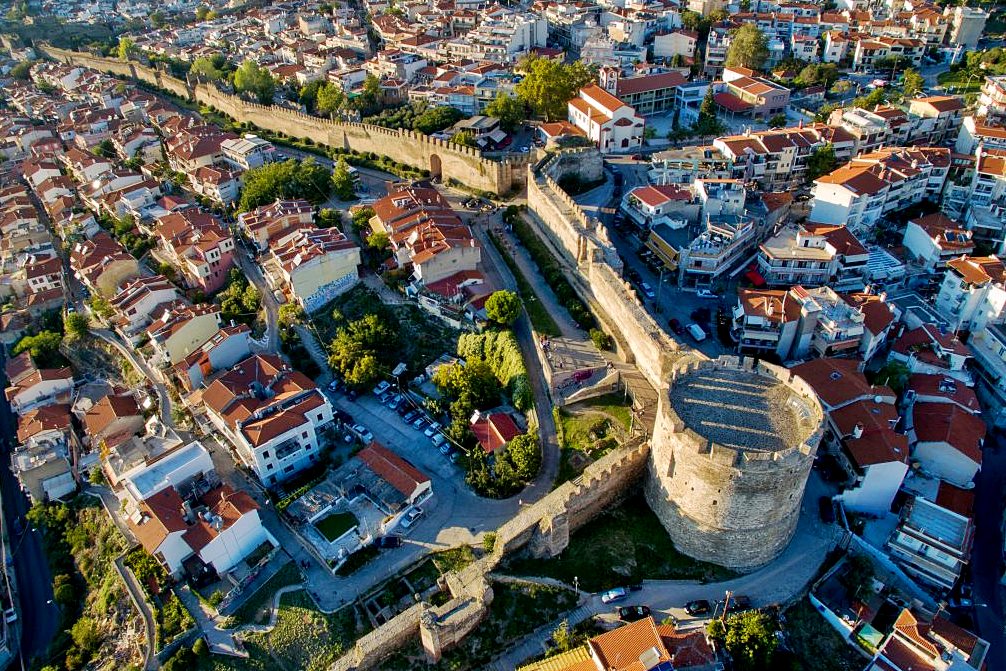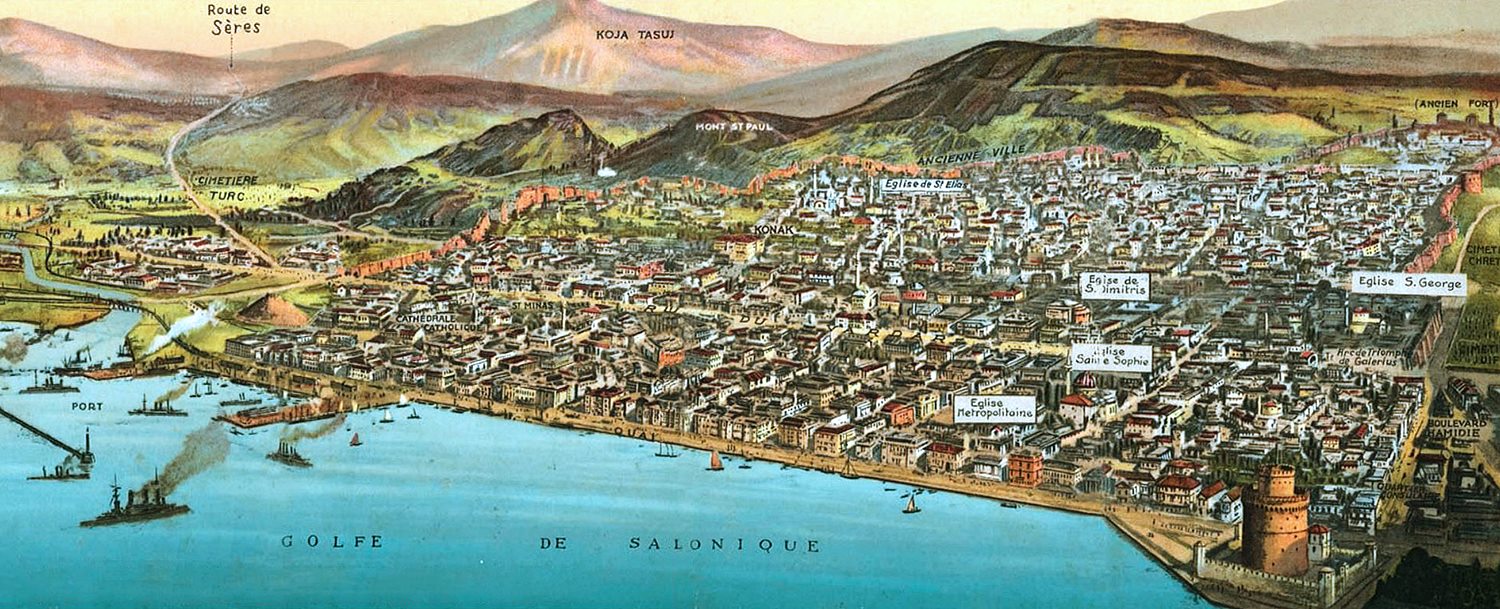Thessaloniki, Thessaloniki, Central Macedonia
Castles of Thessaloniki
| Location: |
| Thessaloniki |
| Region > Prefecture: | 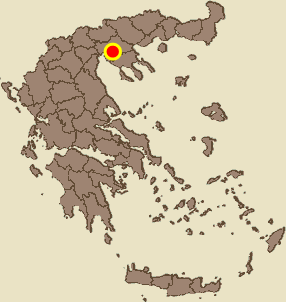 |
| Central Macedonia Thessaloniki | |
| Municipality > Town: | |
| City of Thessaloniki • Thessaloniki | |
| Altitude: | |
| Elevation ≈ 200 m |
| Time of Construction | Origin | |
| 5th century | BYZANTINE |
|
| Castle Type | Condition | |
| Byzantine City |
Relatively Good
|
The “Castles of Thessaloniki” is a complex of forts, towers and walls that were constructed over a period of many centuries to protect the city.
The White tower, the Eptapyrgion and the Vardari fortress which are parts of Thessaloniki fortifications are presented separately, in this site, as autonomous castles.
History
Thessaloniki was founded in 316 BC by Kassandros who married the sister of Alexander thw Great, Thessaloniki, and gave her name to the new city.
The city was fortified since its foundation, but the present walls date from the early Byzantine period, around mid 5th century, and incorporate parts of an earlier, late 3rd-century wall. The walls consist of the typical late Roman mixed construction of ashlar masonry alternating with bands of brick. The northern part of the walls adjoins the acropolis of the city, which formed a separate fortified enceinte, and within it lies another citadel, the Eptapyrgion.
Extensive rebuilding of the walls was carried, as mentioned in the 5th century, most possibly in the 440s, by Ormisdas.
Barbarian raids in the 5th and 6th centuries (by Slavs, Avars etc.) necessitated frequent reinforcement of the walls. The ease with which the Saracens captured the city in 904 through the defenders' negligence led to the walls being strengthened to resist the danger presented by the Bulgarians.
Major repair work was undertaken again in the 13th and 14th centuries by the Palaeologan dynasty both to the walls (e.g. the Anna Palaeologina Gate) and to the Eptapyrgion (the citadel).
Venetian indifference facilitated the capture of Thessalonike by the Turks (1430), who then paid great attention to the city's fortifications.
The Walls of Thessaloniki encircled the city during the Middle Ages and until the late 19th century, when large parts of the walls, including the entire seaward section, were demolished as part of the Ottoman authorities' restructuring of Thessaloniki's urban fabric.
Structure, Fortification & Buildings
The fortification complex commonly described as "Thessaloniki Castles" consists of the following parts:
1. The fortification of Kato Poli (or of Lower City). The plan of this fortification is a quadrilateral, whose two parallel sides - the west and the east - are perpendicular to the sea. From the other two sides, one was the sea wall (of which nothing is left) and the other to the north, it passes through the districts of Kallithea and Kastra of the modern Municipality of Sykea, following the morphology of the ground, in a much more zigzag path, compared to the other sides.
The length of the walls of the Lower City of Thessaloniki was 6.8 kilometers, of which a significant part, about 3.6 kilometers, is not preserved.
2. The fortification of the Upper City (or of the acropolis). It is located northeast of Kato Poli, from which it is separated by a 400m long wall. The length of the walls of the acropolis was 1,900 meters including 400m. of the joint section with the Lower Town.
Almost all of the walls of Ano Poli are preserved, with the exception of some small sections on the north side that are either in poor condition or completely missing.
3. Eptapyrgio: Newer than the previous fortifications, it is located entirely inside the acropolis, at the highest point. It is presented in a separate article in Kastrologos.
4. The fortress of Vardari: A relatively small fortress built outside the southwestern end of the Byzantine walls, next to the modern Court House, to protect the port of Constantine the Great. It also had an extension –the so called “Jereboulon”– to protect the peer. It is presented in a separate article in Kastrologos.
5. The White Tower, which together with its enclosure was a newer independent fortification at the southeastern end of the Byzantine wall. It is presented in a separate article in Kastrologos.
The locals when referring to the “Castles of Thessaloniki” mean the walls and towers of Ano Poli, plus the north-northeast walls of Kato Poli, plus Eptapyrgio.
The total of the fortifications of Kato Poli and Ano Poli (parts 1 and 2 of the above classification) constitute what is called in the bibliography “the Byzantine Walls” of Thessaloniki. The total length of the Byzantine walls. based on the above, was 8,700 meters, of which about 5,000 meters survive. The degree of preservation of the surviving walls varies, but a large part is preserved at their original height which ranged between 8.30m. and 10.50m.
These numbers, together with their history, make the “Castles of Thessaloniki” the largest and most remarkable medieval castle in Greece.
A characteristic of the Castles of Thessaloniki is the many towers at close distances from each other. Today, about 55 towers survive (the number fluctuates depending on whether or not the half-ruined towers or the simple protrudes of the wall are included). Almost all towers are in the north walls. The 25 are in the wall of the acropolis. Most of them are from the Byzantine period and have a rectangular layout.
There are no towers in the lower parts on the east and west sides, but the walls form triangular cantilevers.
Some of the towers of the walls of Thessaloniki are of particular interest such as the cylindrical tower of Trigonion, the tower of Andronikos etc (see the map above).
| First entry in Kastrologos: | March 2012 | Last update of info and text: | September 2022 | Last addition of photo/video: | September 2022 |
|
|
| Access |
|---|
| Approach to the monument: |
| - |
| Entrance: |
| The walls and the towers are visible and accessible all over the city of Thessaloniki, especially in Ano Poli (Upper City). Only in Eptapyrgio and the White Tower the entrance is controlled. |
| Other castles around |
|---|
| Tower of Agios Vasileios |
| Eptapyrgio |
| Lefkos Pyrgos |
| Fortress of Aetos |
| Castle of Nea Santa |
| Fortress of Vardari |
| Tower of Vasilika |
| Kastri of Chortiatis |



